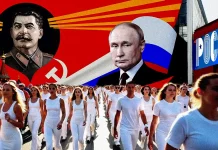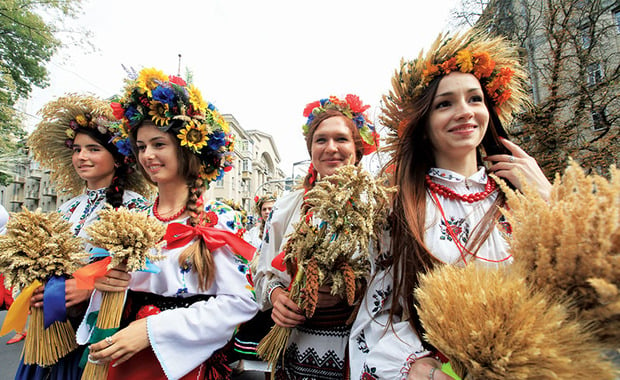
Many foreigners, having told their friends they’re moving to Kyiv for a job or posting, are asked: “Kyiv? That’s in Russia, isn’t it?”
As a recently independent country, it’s not surprising that a number of myths or misconceptions about Ukraine still persist. Long under the yoke of its giant neighbor Russia, Ukrainians have struggled through the centuries to maintain their distinct identity, traditions and culture.
Ukrainians have largely succeeded in doing so, but there are still a few misapprehensions about the country that have yet to be put to rest, and due to mendacious Kremlin propaganda, a few more have emerged in recent years. Here, the Kyiv Post sets the record straight about a range of myths that have grown up about the country.
Ukrainians eat a lot
Anyone who has attended a Ukrainian birthday party or other family celebration will have encountered a table groaning with huge amounts of food, and one might get the impression Ukrainians always overindulge at mealtimes. In fact, the Ukrainian diet is rather healthy and modest, which is borne out by the country’s obesity rate: At around 20 percent, it is not even in the top 30 in the world, and is far below most Western countries’ rates, and Russia’s as well.
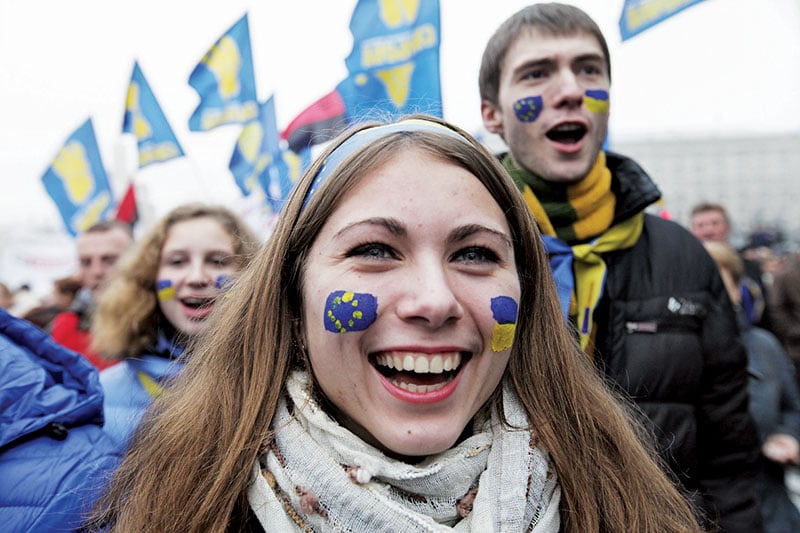
Ukrainians marry young
While this may have been true in the past, when getting married was often a way to jump the line for the provision of state housing, it is no longer. Today, Ukrainians tend not to get married until after the age of 26, as women are becoming more career-focused and both men and women are reluctant to start a family unless they can really afford everything they need. Liudmyla Sliusar, a researcher at the Ukrainian Institute for Demography and Social Studies, says the average age men get married is 30, while for women it is 27, according to a report in Gazeta.UA.
Ukrainian men want women as homemakers
Another hangover from the days of the Soviet Union, this is largely no longer the case, especially in younger people who have only lived in independent Ukraine. With the widespread availability of higher education for women, and increasing career opportunities, fewer Ukrainian women are content to assume traditional roles, and the majority of women in Ukraine, after university, now pursue careers and by the age of 26-28 are yet not married and do not have children.
Ukraine is cold and snowy much of the year
Ukraine has a continental climate, with winters that are colder than in Western Europe but summers that are usually hotter. The capital Kyiv is practically on the same latitude as London in the United Kingdom, and the southern portions of the country have a climate well-suited to growing grapes, while Crimea’s climate is sub-tropical. The weather is changeable and heavy thunderstorms are common in the summer months, but the climate is far more temperate than in Siberia or most of Canada.
Ukrainian education is corrupt, low quality
Not even close. Ukraine ranks fourth highest in percentage of citizens with a higher education, and in the top 40 smartest countries based on math and science scores, according to Business Insider. While it is still common to have to make payments to educational institutions to gain admission, and there are isolated cases of people having paid to be awarded degrees, the quality of Ukrainian education is high. Moreover, recent private initiatives to teach information technology skills to the workforce should ensure Ukraine has some of the best-skilled tech workers in the world for years to come.
The Ukrainian language is a dialect of Russian
Within the Slavic language group, Russian is in fact the odd one out. If you could have heard an ancient East Slavic tribesman, his speech would have sounded much more like Ukrainian than Russian. Indeed, Ukrainian shares many more linguistic features with Belarusian, Czech, Slovak, Polish and Serbo-Croat than it does with Russian. Ukrainian and Russian are not mutually intelligible – the standard linguistic test for determining whether a language is a fully-fledged language in its own right, and not a dialect of another. While many people in Ukraine have Russian as their first language, most people are bilingual in Ukrainian and Russian, and will switch languages depending on who they are speaking to. Politics aside, the language issue has never been problematic in Ukraine.
Patriotic Ukrainians are extreme nationalists
This new myth has emerged since Russia’s invasion and annexation of Crimea and its war in the Donbas. Stepan Bandera, a Ukrainian nationalist who lived from 1909 to 1959, who fought with and against both the Soviets and the German Nazis during World War II, is a controversial figure in Ukraine, and by no means the sole figurehead of the Ukrainian independence movement. Ukrainian politics has become more overtly patriotic and nationalistic since the Kremlin launched its war, but election results show that most Ukrainians are social democrats, favoring left-of-center politics.
Ukraine has little in common with West
The perception of Ukraine as an exotic, Eastern country has its roots in old stereotypes about the Soviet Union that persist to this day. But geographically, the center of Europe lies within Ukraine’s borders, and there is much about Ukrainian culture and traditions that immediately strike Westerners as familiar. In western Ukraine, in particular, there are areas that have been incorporated in other European states, such as the Austro-Hungarian empire, and which bear the hallmark of this Central European influence to this day.
Ukrainians drink a lot
While the availability of cheap alcohol does cause problems with alcoholism in Ukraine, according to the World Health Organization the level of alcohol consumption in Ukraine is the same as in Italy, at 22nd place in the world. Drinking habits are different here than in France, for instance, where having a glass or two of beer or wine during dinner every day is the norm: Ukrainians tend not to drink at every meal. Social drinking is much more ritualized, however, with the tradition of liberally toasting friends, family and guests with Ukrainian vodka on special occasions leading to the impression that overconsumption of alcohol is common. In reality, it is not.
Much of Ukraine has been contaminated by Chornobyl radioactivity
The dreadful Chornobyl disaster of April 26, 1986 has left a long shadow on the country, and rendered the area around the stricken plant uninhabitable for perhaps centuries. However, the vast majority of the country was unaffected by the radioactive fallout from the reactor explosion, and Ukrainian food and water are regularly checked for radioactivity. While Ukrainians remember the disaster with grief, radioactivity in the country barely registers among their everyday concerns.
Unemotional Ukrainians
This myth has appeared because it is not the Ukrainian habit to be open and smiling with strangers – but they are no more “cold and unemotional” than any northern European would be. Once you get to know them better, Ukrainians express their feeling and emotions much more openly, and can then strike their guests as being more straightforward and sincere than some Westerners.
Crimea is a Russian land
While Russia absorbed Crimea into its empire in the 18th century after one of its many wars with the Ottoman Empire (based in Turkey), Crimea has a long history that had little to do with Russia, or even Ukraine. The people with the greatest claim to call Crimea home, are, of course, the Crimean Tatars, but their population was repressed and deported during the time that the Russian Empire and later Soviet Union was in control of the peninsula. Things changed for the better after Ukraine gained independence, and Crimea gained autonomy within the unitary state of Ukraine, with Crimean Tatars returning to their homeland from places of deportation in Central Asia. Ethnic Russians and Ukrainians also inhabit Crimea, but describing it as “Russian land” is to ignore a vast portion of its history, recent and ancient.
Easy women in Ukraine
Even in Soviet times, Ukrainian women (especially in the capital Kyiv), were famed for their beauty. This reputation carried over into the years of independence, and Kyiv was a favorite destination for rich Western men looking for a “mail-order bride.” Many have been disappointed: not by the beauty of Ukrainian women, but by the fact that Ukrainian women are apt to demand respect from men, and their favors cannot simply be bought by a man offering a new home in a far-off Western country. While Ukrainian women can be loving and faithful wives, and caring mothers, winning their affection is not easy, and will demand sincere effort from any man.
Ukrainians eat a lot of salo (lard, or pig fat)
It is true that the majority of Ukrainians like salo and eat it quite often. However, the average Ukrainian eats no more than 18 kilograms of pork a year, which is a third of the amount eaten by the average German. Still, Ukrainians’ fondness for pork fat is evident in its trade statistics – Ukraine annually imports up to 70,000 tons of lard from Germany, Hungary and Poland. So this myth is pretty close to reality.
Service is bad
Another hangover from Soviet times is the perception among foreigners that the service in Ukrainian hotels, bars and restaurants is universally bad. In fact, Ukrainian service, especially in the larger cities, has improved immensely over the past two decades or so. That’s mainly been due to the competition for jobs in the service industries that emerged due to job shortages in the nascent market economy – now, those who want to get a job in a top bar or restaurant have to have good service skills. And while it’s not usual to tip in Ukraine, if you do leave something for your server, you will be practically guaranteed a warm welcome and attentive service next time you visit.
Ukrainians wear vyshyvankas a lot
This has started to become less of a myth since the EuroMaidan Revolution, but is still far from being entirely true. The vyshyvanka is an essential part of Ukraine’s national costume, and it is true that after the revolution it became a symbol, and a way to express national identity and pride. Moreover, the vyshyvanka is now a very popular fashion item in Ukraine and beyond. World famous brands, from Valentino to H&M, now use elements of Ukrainian embroidery in their clothes. And while Ukrainians used to wear vyshyvankas mostly on big occasions, and no more than once or twice a year, many are now proud to wear embroidered shirts or dresses as everyday wear.
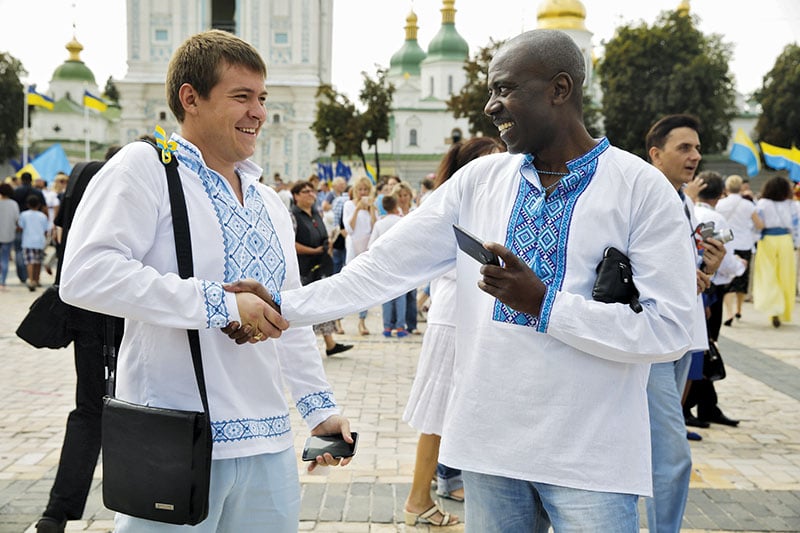
Ukrainians rip off unsuspecting tourists
It used to be quite common to see signs at the entry to tourist sights in Ukraine with separate prices for Ukrainians and foreigners – the prices for foreigners being higher. But that is hardly ever the case now. If a bar or restaurant favored by foreigners has high prices, Ukrainians have to pay them as well, and indeed, relatively speaking, such places are more expensive for most Ukrainians to visit, so tourists often actually get quite a good deal, especially in comparison to prices in other countries. Despite the war in the east, Ukraine is still a great destination for tourists, with more than 10 million people visiting in 2014, most of them, however, from bordering countries.
Ukrainians want to leave their country
This “myth” is actually more true than not. An estimated 3 million Ukrainians work abroad, mostly in Russia, Poland and other Eastern European countries. Large numbers of Ukrainians have left the country since independence for work or study, and many have since chosen to live abroad permanently. However, in this country of over 40 million people most have chosen to remain here, even when they have had the opportunity to leave. Indeed, since Ukraine’s EuroMaidan Revolution, many Ukrainians who built successful careers abroad have returned to their homeland to help it build a better future.
Ukrainian women are among most beautiful
This is no myth, and the research proves it: Ukraine has consistently been ranked among the top 10 countries in the world in terms of the beauty of its women. Ukrainian women are also proud of their femininity and dress accordingly: sweatpants and hoodies would generally be last out of the closet when they are deciding what to wear.
Ukraine has the worst roads in the world
Given Ukraine’s climate of hot summers and cold winters, road surfaces tend to deteriorate quickly. Add to that budget shortages for road repairs, and it’s no surprise many roads, even in big cities, are in a poor state in Ukraine – hence the popularity of SUVs and cars with a high clearance. But the worst roads in the world? Nowhere near it. Ukraine has also been upgrading its highway network in recent years, and now the roads between Kyiv, Odesa and Lviv are some of the best in the country, matching those in Western Europe, at least in terms of surface quality.
Ukrainians drink vodka
Well, yes they do, but it’s more likely that they will actually be drinking horilka – Ukrainian vodka. Vodka is a Russian word, roughly meaning “little water,” while the Ukrainian word horilka translates roughly as “burning water.” Firewater, basically. Moreover, a favorite traditional flavoring for horilka is chili pepper, so some horilka can indeed “burn” the throat.
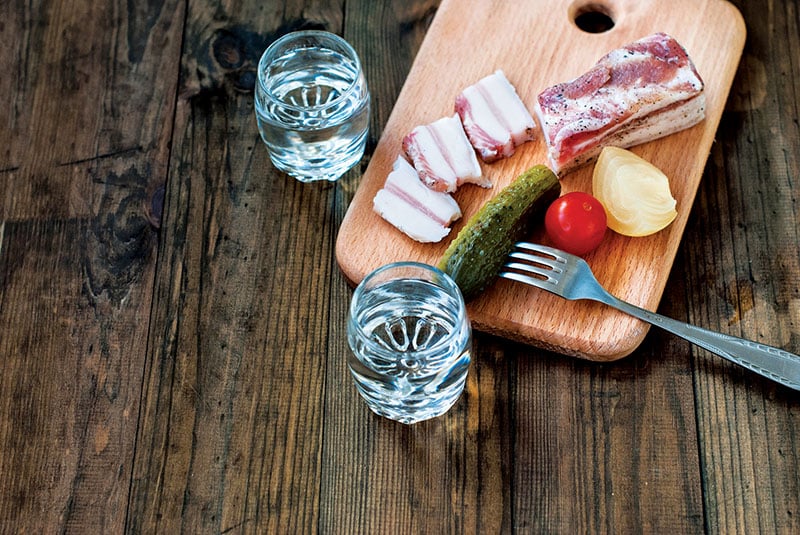
Ukraine suffered a coup by neo-Nazis in 2013-14
This myth of Kremlin propaganda was created as the anti-government protests in Kyiv reached their climax in the early months of 2014. While it’s true that a small number of protesters were from the far right, the vast majority were ordinary Ukrainians. The Orwellian use of the word “coup” to describe the popular uprising is another clue to this myth’s origins as Kremlin propaganda. Repeat this nonsense to Ukrainians at your peril – most will be insulted, and those who participated in the protests themselves in Kyiv will be insulted, but also laugh at you for being so gullible.
Ukraine isn’t a country
During the NATO Summit in Bucharest, Romania, Russian President Vladimir Putin said to then U.S. President George W. Bush: “You have to understand, George, that Ukraine is not even a country.” While this opinion fits nicely with the Kremlin’s view of the world, the facts shows it to be a myth. Ukraine within its present borders, including the Russian-annexed territory of Crimea, is an internationally recognized state, and a member of the United Nations. Indeed, Ukraine joined the United Nations as an individual nation state in 1945, while Russia did not – it was represented as part of the Soviet Union.
Kyiv is the mother of Russian cities
Kyiv was the capital of the ancient Kyivan Rus state, which broke up in the 12th century, long before any state known as “Russia” came to exist. The modern Russian state more directly precedes from Tsarist Russia, which itself proceeded from the Grand Duchy of Moscow, or Muscovy, with its capital in Moscow. Thus the “mother city” of modern Russia is, in fact, Moscow.
Ukraine is ‘deeply divided along ethnic and linguistic lines’
Since gaining independence in 1991, Ukraine has mostly been a peaceful, ethnically and linguistically varied state, home to speakers of not only Ukrainian, but Russian, Eastern Yiddish, Rusyn, Romanian, Belarusian, Crimean Tatar, Bulgarian, Hungarian, Polish, Armenian, German and Greek. While Ukrainian is the language most commonly spoken, Russian is also widely used, and many Ukrainians are equally proficient in both. Moreover, Ukrainians will switch between the two as the situation requires, sometimes using different languages to address the members of a single conversational group. Politics had muddied the issue, but ethnic Ukrainians can be heard speaking Russian as well as Ukrainian. It is a mistake to identify a Russian-speaking Ukrainian as a “Russian,” just as it would be a mistake to say an American, Canadian, Australian, Irish person or Scot was “English” because they speak English.
By Anastasia Yarova, Kyiv Post




